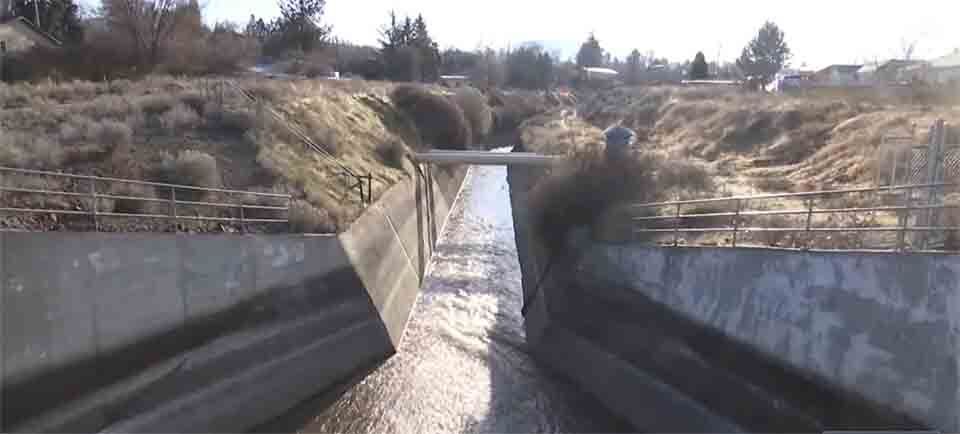Klamath Dam Removal: The Days of Plenty for Californian Commercial Fishermen are Long Gone

KLAMATH COUNTY Ore. — Dave Bitts is an old salt. He can single-handedly bring home 100 salmon a day.
But the days of plenty for commercial fishermen ended a long time. It ended when salmon populations struggled to return in significant numbers, survive, and to spawn in California rivers.
Ocean Salmon Fishing Prohibited for Second Successive Year
In April, for the second successive year, the Pacific Fishery management Council (PFMC) unanimously agreed to shut down commercial and recreational ocean salmon fishing. The closure was caused by dwindling numbers of adult salmon returning to several rivers in California.
Bitts stands on his boat Elmarue and looks wistfully across at a handful of other commercial boats docked at Woodley Island in Humboldt Bay, Eureka.
“There are not as many fishing boats anymore…there is not much of a salmon season either.” The 76-year-old man of the seas served as president of the Pacific Coast Federation of Fishermen’s Associations (PCFFA), the largest trade organization representing West Coast fishers, until 2019.
Bitts says salmon habitat issues have come under the spotlight for five decades. Now, he feels that the $1.4 billion annual industry has been ‘fighting a rearguard action’ for all that time.
Ongoing salmon issues are blamed on climate change and drought. A booming industry that once issued 7,000 commercial salmon fishing permits annually has dwindled down to less than 1,000.
Poor Salmon Stocks Spell a Major Economic Disaster
Depleted salmon stocks are described as ‘a major economic disaster’ by Glen Spain, director of the PCFFA’s Northwest Region. He says Crescent City has lost 95% of its previous landings.
Over the years, salmon stocks have been decimated by a number of effects and causes. The loss of habitat caused by intensive logging and mining before environmental laws were put into place; river dams blocking access to habitat; water diversion for cities and agriculture; and climate change.
Deconstruction of Klamath River Dams Will Restore Salmon Populations
But there is hope on the horizon for the men who rely on salmon fishing for their livelihoods – the deconstruction of the Klamath River’s four hydroelectric dams. Commercial fishers joined voices with tribal and recreational counterparts who have long advocated for the removal of the dams to restore salmon populations to the rivers.
The decline of salmon dates back more than 40 years. In fact, to the early 1980s when the numbers of returning adults plummeted from 880,000 to less than 50,000. By 1986, Congress stepped in with the Klamath River Basin Fishery Resources Restoration Act, and a committee of multi-stakeholders was formed to address the problem.
The four Klamath River dams were identified as a major problem and the call for their deconstruction gained momentum in 2002 when 78,000 fish died in the river from a bacterial pathogen called columnaris and a parasite called “ich”. The diseases multiplied because of warm water temperatures and thousands of salmon crowding at the river’s mouth died. An entire generation of fall-run salmon that had returned to spawn was wiped out.
The repercussions to the commercial industry were enormous, forcing the closure of ocean fishing from Monterey, California, to the border of Oregon-Washington, four years after this catastrophic event.
But finally, there is hope on the horizon with the deconstruction of the hydroelectric dams, proceeding speedily. The decision to break them down was made by the owner, PacifiCorp, when the cost of retrofitting to comply with water quality requirements and the passage of fish was no longer viable.
Once the dam walls are down, Klamath River runs will improve and should increase the number of salmon commercial fishers can harvest. Once again, adult Chinook will be able to access new upstream habitat and an improvement to water quality will reduce deadly pathogens in the river, a killer of an alarming number of juvenile fish most years.
Putting the Brakes on Enthusiastic Predictions
Putting the brakes on enthusiastic predictions, Brett Kormos, the program manager of Coastal Fisheries northern region, warns that the return of salmon in substantial numbers could be 100 years in the making. He reminds that the lack of suitable freshwater habitat for spawning adults is having the biggest impact. Other problems include disease, water diversion, and climate change.
The San Joaquin and Sacramento rivers that flow through the Central Valley where a combination of low stream flows and warm temperatures, further impacted by diversions to cities and agriculture, create a lethal combination for salmon eggs that need cold water to survive.
Changes to their environment have changed salmon feeding habits. Kormos says they are eating more anchovies and less copepods (krill). Kormos points out that anchovies contain thiaminase, a substance that depletes the fish of vitamin B, an essential nutrient required for successful spawning.

i guess by your logic Shasta Lake should be drained as well. I think you don’t give a damn about the fish, just your climate change crusade and never mind who is affected by the consequences